Addressing the “Maintenance Required” Message in Toyota Corolla Hatchback: Maintenance Tips

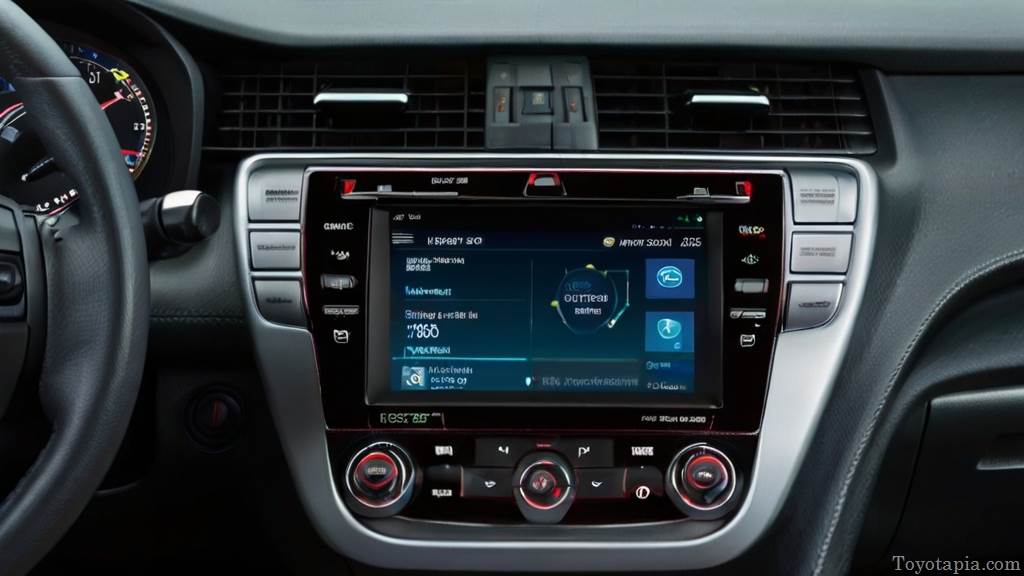
Introduction to Toyota Corolla Hatchback Maintenance
Toyota Corolla Hatchback, a reliable companion on the road, requires diligent care to keep it running smoothly for years to come. Regular maintenance isn’t just a chore, it’s the lifeblood of your vehicle, ensuring its longevity and performance. Let’s delve into why maintenance matters and understand the various indicators your Corolla might throw your way.
Contents
ToggleImportance of Regular Maintenance for Vehicle Longevity
Taking care of your Corolla Hatchback isn’t just about preserving its appearance, it’s about safeguarding its mechanical integrity. Think of it like giving your car a check-up at the doctor’s office. Regular maintenance helps catch small issues before they spiral into expensive repairs down the road.
When you stick to your maintenance schedule, you’re not just extending the life of your vehicle, you’re also protecting its resale value. A well-maintained Corolla commands a higher price tag when it’s time to upgrade.
Overview of Common Maintenance Indicators and Diagnostic Systems
Your Corolla comes equipped with a sophisticated array of diagnostic systems designed to alert you when something needs attention. One of the most common indicators you’ll encounter is the “Maintenance Required” message. But what does it mean?
This message isn’t cause for panic, rather, it’s your Corolla’s way of gently nudging you to schedule routine maintenance. It could indicate something as simple as an oil change or a more complex issue requiring professional attention. Understanding these messages empowers you to take proactive steps to keep your Corolla in prime condition.
But the “Maintenance Required” message is just the tip of the iceberg. Your Corolla’s onboard diagnostic system, known as OBD-II, constantly monitors various systems and sensors for abnormalities. When it detects a potential issue, it illuminates the dreaded check engine light.
Don’t fret, while the check engine light can be intimidating, it’s often a straightforward fix. However, ignoring it could lead to more significant problems down the line. That’s why it’s essential to address these warnings promptly.
In our next section, we’ll dive deeper into the specific maintenance tasks your Corolla needs to thrive on the road. From oil changes to tire rotations, we’ll cover it all to ensure you’re equipped to keep your Corolla running like a dream. So buckle up and let’s hit the road to maintenance mastery!
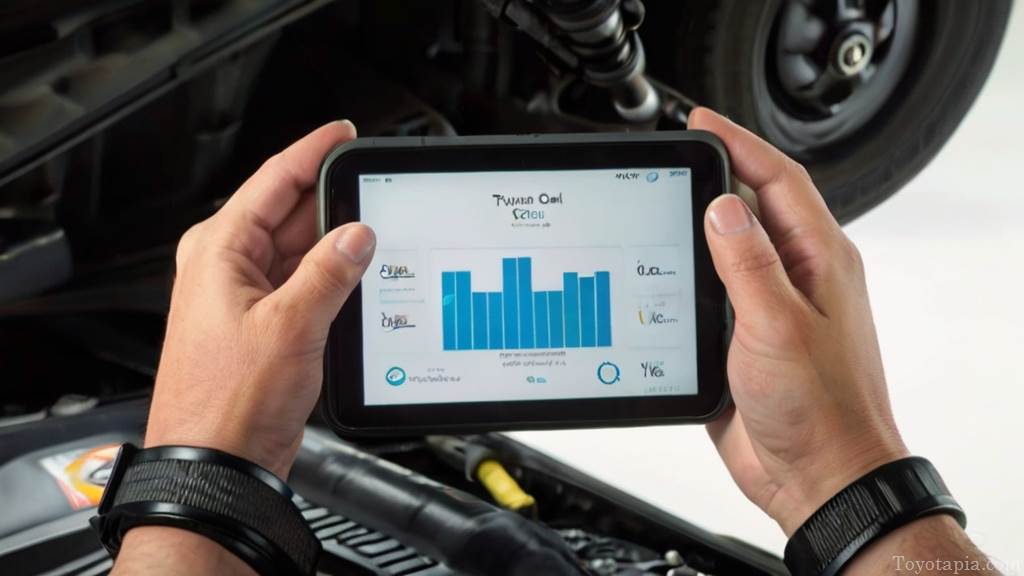
Understanding the “Maintenance Required” Message
Your Toyota Corolla Hatchback is more than just a car, it’s a sophisticated piece of machinery equipped with advanced diagnostic systems to keep you informed about its health. One of the most common messages you might encounter is the “Maintenance Required” alert. Let’s dive into what this message means and why it’s crucial to pay attention to it.
Interpretation of OBD-II System Messages
The “Maintenance Required” message is part of your Corolla’s On-Board Diagnostics II (OBD-II) system, a network of sensors and computer algorithms designed to monitor various components of your vehicle. When triggered, this message typically indicates that your Corolla is due for routine maintenance, such as an oil change or tire rotation.
But here’s the kicker: the OBD-II system doesn’t just stop at routine maintenance reminders. It’s also capable of detecting potential issues with your vehicle’s engine, transmission, and emissions systems. When it identifies a problem, it illuminates the check engine light and stores a corresponding diagnostic trouble code (DTC) to help mechanics pinpoint the issue.
So, when you see the “Maintenance Required” message, don’t panic. Instead, view it as a friendly reminder from your Corolla to schedule some TLC for your vehicle. Ignoring this message could lead to more significant problems down the road, so it’s essential to address it promptly.
Significance of Timely Response to Maintenance Alerts
You might be tempted to brush off the “Maintenance Required” message, especially if your Corolla seems to be running smoothly. After all, who has time for maintenance when life gets busy? But here’s the thing: neglecting routine maintenance can have dire consequences for your vehicle’s health and your wallet.
Regular maintenance isn’t just about changing oil or rotating tires, it’s about preserving the integrity of your Corolla’s engine, transmission, and other critical components. By staying on top of your maintenance schedule, you can catch small issues before they escalate into costly repairs.
But it’s not just about preventing breakdowns, it’s also about maximizing performance and fuel efficiency. A well-maintained Corolla not only runs smoother but also gets better gas mileage, saving you money at the pump.
So, the next time your Corolla displays the “Maintenance Required” message, don’t procrastinate. Schedule an appointment with your trusted mechanic or tackle the task yourself if you’re handy with tools. Your Corolla will thank you for it with years of reliable performance on the road.
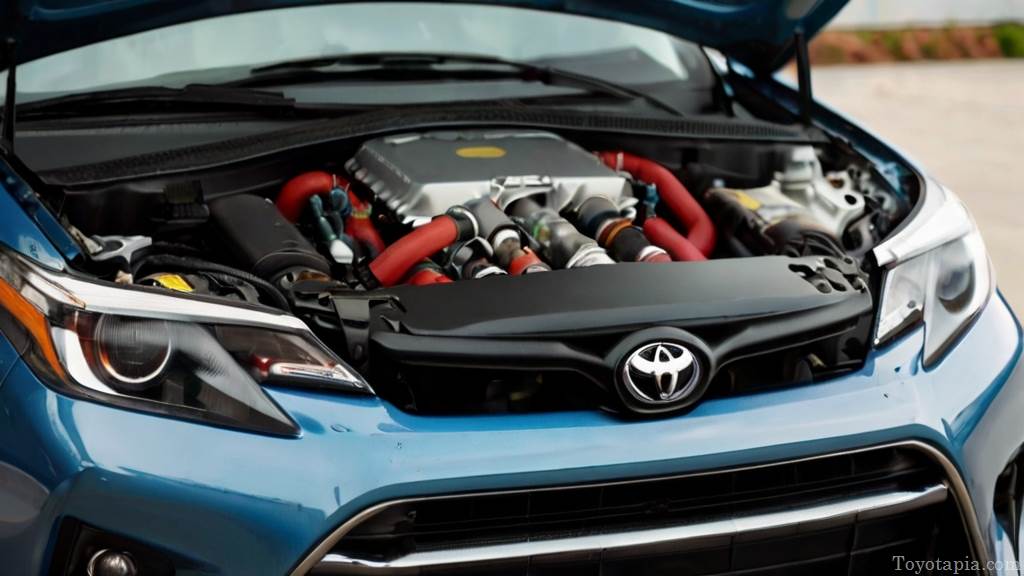
Essential Maintenance Tasks for Toyota Corolla Hatchback
Maintaining your Toyota Corolla Hatchback isn’t just about keeping up appearances, it’s about ensuring its reliability and performance on the road. Let’s delve into some essential maintenance tasks that will keep your Corolla running smoothly for miles to come.
Engine Oil Change and Filter Replacement: Synthetic vs. Conventional Oil
Ah, the lifeblood of your Corolla’s engine: oil. Regular oil changes are vital to keeping your engine running smoothly and preventing premature wear and tear. But when it comes to choosing between synthetic and conventional oil, which is the best option for your Corolla?
Synthetic oil boasts superior performance in extreme temperatures and provides better protection against engine deposits. It also tends to last longer between oil changes, making it a convenient choice for busy drivers. On the other hand, conventional oil is more budget-friendly and works well for vehicles with less demanding driving conditions.
When it comes down to it, the choice between synthetic and conventional oil ultimately depends on your driving habits and manufacturer recommendations. Consult your owner’s manual or talk to your trusted mechanic to determine the best oil for your Corolla’s needs.
Tire Rotation and Inspection: Tread Wear Patterns and Alignment Checks
Your Corolla’s tires are the only thing standing between you and the road, so it’s crucial to keep them in tip-top shape. Regular tire rotations help ensure even wear and extend the life of your tires, saving you money in the long run.
But tire maintenance goes beyond just rotating them every few thousand miles. It’s essential to inspect your tires regularly for signs of wear and tear, such as uneven tread wear or bulges in the sidewall. These could indicate issues with your alignment or suspension that need to be addressed promptly.
Proper tire inflation is also critical for fuel efficiency and safety. Underinflated tires can lead to decreased fuel economy and increased risk of blowouts, while overinflated tires can compromise handling and traction.
Brake Inspection and Fluid Replacement: Pad and Rotor Measurement Techniques
Your Corolla’s brakes are arguably the most critical safety feature, so it’s essential to keep them in top condition. Regular brake inspections help catch issues before they escalate into costly repairs or, worse, brake failure on the road.
During a brake inspection, your mechanic will check the thickness of your brake pads and measure the condition of your rotors. Worn brake pads or warped rotors can lead to decreased stopping power and increased braking distances, putting you and your passengers at risk.
Brake fluid is another crucial component of your Corolla’s braking system. Over time, brake fluid can become contaminated with moisture and debris, compromising its effectiveness. That’s why it’s essential to flush and replace your brake fluid according to your manufacturer’s recommendations.
By staying on top of these essential maintenance tasks, you can keep your Toyota Corolla Hatchback performing at its best for years to come. So don’t wait until something goes wrong, schedule your maintenance appointments regularly and enjoy peace of mind on the road.
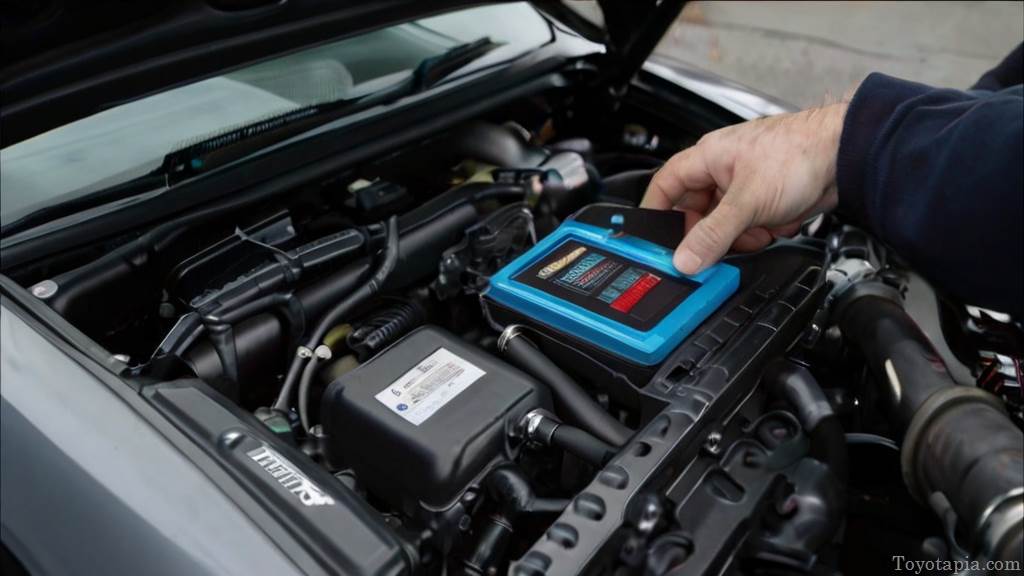
Addressing Engine Maintenance Needs
Your Toyota Corolla Hatchback’s engine is the heart of the vehicle, propelling you forward mile after mile. Keeping it in top condition is essential for optimal performance and longevity. Let’s explore some key engine maintenance tasks to ensure your Corolla runs smoothly for years to come.
Checking and Topping Up Fluid Levels: Coolant, Power Steering, and Transmission Fluids
Fluids are the lifeblood of your Corolla’s engine, ensuring it stays cool, lubricated, and functioning properly. Regularly checking and topping up essential fluids such as coolant, power steering fluid, and transmission fluid is vital for engine health.
-
Coolant: Responsible for regulating your engine’s temperature, coolant prevents overheating and freezing. Check your coolant levels regularly and top up as needed to avoid engine damage.
-
Power Steering Fluid: Power steering fluid enables smooth steering, enhancing your driving experience. Low power steering fluid levels can lead to difficulty turning the steering wheel, indicating a need for replenishment.
-
Transmission Fluid: Transmission fluid lubricates the transmission system, allowing for seamless gear shifts. Insufficient transmission fluid levels can result in rough shifting or transmission damage, so be sure to check and top up as necessary.
Regularly inspecting and topping up these fluids ensures your Corolla’s engine operates at peak performance, minimizing the risk of costly repairs down the road.
Inspecting Belts and Hoses: Wear Patterns and Tension Adjustment
Belts and hoses play crucial roles in your Corolla’s engine, driving various components and facilitating fluid circulation. Inspecting them for wear and tear is essential for preventing unexpected breakdowns.
-
Belts: Check for signs of cracking, fraying, or glazing on your Corolla’s belts, indicating wear and potential failure. Adjusting belt tension ensures proper function and extends their lifespan.
-
Hoses: Inspect hoses for leaks, bulges, or soft spots, which could indicate deterioration. Addressing these issues promptly prevents coolant or other fluids from leaking and causing engine damage.
Regular belt and hose inspections, along with timely adjustments and replacements, keep your Corolla’s engine running smoothly and reduce the risk of unexpected breakdowns.
Spark Plug Replacement: Types of Spark Plugs and Gap Adjustment
Spark plugs play a vital role in igniting the air-fuel mixture in your Corolla’s engine cylinders, enabling combustion and powering the vehicle. Over time, spark plugs wear out and lose their effectiveness, leading to decreased engine performance and fuel efficiency.
-
Types of Spark Plugs: Your Corolla may be equipped with either traditional copper spark plugs or long-lasting platinum or iridium spark plugs. Each type has its advantages, so consult your owner’s manual or a trusted mechanic to determine the best option for your vehicle.
-
Gap Adjustment: Proper spark plug gap adjustment ensures optimal ignition and engine performance. Using a gap tool, adjust the gap between the spark plug electrodes to manufacturer specifications before installation.
Regularly replacing spark plugs according to your maintenance schedule ensures your Corolla’s engine operates efficiently, maximizing performance and fuel economy.
By addressing these essential engine maintenance tasks, you can keep your Toyota Corolla Hatchback’s engine purring like a kitten and enjoy worry-free driving for years to come.
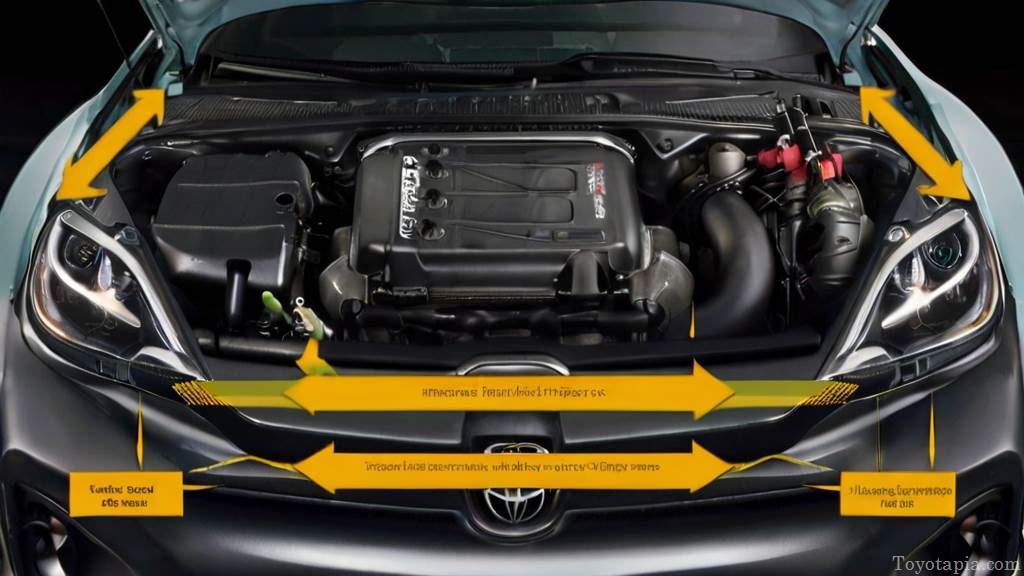
Tackling Transmission and Differential Maintenance
Your Toyota Corolla Hatchback’s transmission and differential systems are like the unsung heroes of your vehicle, quietly working behind the scenes to ensure smooth power delivery and optimal performance. Let’s dive into some essential maintenance tasks to keep these critical components in top condition.
Fluid Inspection and Replacement: Transmission Fluid Types and Change Intervals
Transmission fluid is the lifeblood of your Corolla’s transmission system, lubricating moving parts and facilitating smooth gear shifts. Regularly inspecting and replacing transmission fluid is crucial for prolonging the lifespan of your transmission and preventing costly repairs.
-
Transmission Fluid Types: Your Corolla may require either automatic transmission fluid (ATF) or manual transmission fluid (MTF), depending on the transmission type. ATF is typically thinner and more slippery, while MTF is thicker and provides better protection for manual transmissions.
-
Change Intervals: The frequency of transmission fluid changes varies depending on driving conditions and manufacturer recommendations. Typically, it’s recommended to change transmission fluid every 30,000 to 60,000 miles. However, if you frequently tow heavy loads or drive in extreme temperatures, more frequent changes may be necessary.
Regularly inspecting and replacing transmission fluid ensures smooth gear shifts and prevents transmission damage, keeping your Corolla running smoothly for miles to come.
Clutch Adjustment (if applicable): Hydraulic vs. Cable Clutch Systems
If your Corolla has a manual transmission, the clutch system is a critical component that requires periodic adjustment to maintain proper function. Manual transmissions may utilize either hydraulic or cable-operated clutch systems, each with its own unique maintenance requirements.
-
Hydraulic Clutch Systems: Hydraulic clutch systems use hydraulic fluid to transmit force from the clutch pedal to the clutch mechanism. These systems typically require minimal adjustment and maintenance, as hydraulic fluid levels are self-adjusting. However, periodic inspection of hydraulic fluid levels and condition is still necessary to ensure proper function.
-
Cable Clutch Systems: Cable-operated clutch systems, on the other hand, rely on a cable to transmit force from the clutch pedal to the clutch mechanism. These systems may require periodic adjustment to maintain proper clutch engagement and disengagement. Inspecting the clutch cable for signs of wear and adjusting tension as needed ensures smooth operation of the clutch system.
Whether your Corolla has a hydraulic or cable-operated clutch system, regular inspection and adjustment of the clutch mechanism are essential for smooth shifting and optimal performance.
By addressing transmission and differential maintenance tasks such as fluid inspection and replacement and clutch adjustment, you can ensure your Toyota Corolla Hatchback’s transmission and differential systems operate smoothly and efficiently, providing you with a comfortable and reliable driving experience for years to come.

Steering and Suspension Maintenance Techniques
Your Toyota Corolla Hatchback’s steering and suspension systems play a crucial role in providing a smooth and comfortable ride, as well as ensuring precise handling and control on the road. Let’s explore some essential maintenance techniques to keep these components in top condition.
Inspection of Steering Components: Rack and Pinion, Tie Rod Ends, and Steering Linkages
Your Corolla’s steering system consists of several components working together to translate your steering input into the movement of the wheels. Regular inspection of these components is essential for maintaining safe and responsive steering.
-
Rack and Pinion: The rack and pinion mechanism is responsible for converting the rotational motion of the steering wheel into linear motion to turn the wheels. Inspecting the rack and pinion for leaks, wear, or damage ensures smooth steering operation.
-
Tie Rod Ends: Tie rod ends connect the steering rack to the steering knuckles, allowing for steering movement. Inspecting tie rod ends for excessive play or wear helps prevent steering instability and uneven tire wear.
-
Steering Linkages: Steering linkages transmit steering input from the steering wheel to the wheels. Checking steering linkages for looseness or damage ensures precise steering control and responsiveness.
Regular inspection of these steering components allows you to identify and address any issues before they escalate into more significant problems, ensuring safe and reliable steering performance.
Suspension System Checks and Adjustments: Strut Inspection and Spring Compression Techniques
Your Corolla’s suspension system is responsible for providing a smooth and comfortable ride by absorbing bumps and vibrations from the road surface. Regular checks and adjustments of the suspension system are essential for maintaining ride quality and handling.
-
Strut Inspection: Struts are a critical component of your Corolla’s suspension system, providing both support and damping for the vehicle. Inspecting struts for leaks, corrosion, or worn bushings ensures optimal suspension performance and ride comfort.
-
Spring Compression Techniques: Coil springs support the weight of the vehicle and provide cushioning over bumps and uneven road surfaces. Performing spring compression tests helps identify worn or weak springs that may affect ride height or suspension stiffness.
By regularly inspecting and adjusting your Corolla’s suspension system, you can ensure a smooth and comfortable ride, as well as precise handling and control on the road. Don’t neglect these critical maintenance tasks, your driving experience and safety depend on them.

Electrical System Maintenance
Your Toyota Corolla Hatchback’s electrical system is like its nervous system, responsible for powering everything from lights to the radio. Proper maintenance ensures everything runs smoothly and reliably. Let’s explore some essential techniques to keep your electrical system in top shape.
Battery Inspection and Maintenance: Load Testing and Terminal Cleaning
Your Corolla’s battery is the heart of its electrical system, providing the power necessary to start the engine and operate electrical components. Regular inspection and maintenance are essential to ensure the battery remains in good condition.
-
Load Testing: Performing a load test on the battery helps determine its health and capacity to hold a charge. This test involves applying a load to the battery while monitoring voltage to assess its performance under load conditions. It helps identify weak or failing batteries before they leave you stranded.
-
Terminal Cleaning: Over time, corrosion can accumulate on the battery terminals, hindering electrical conductivity and potentially causing starting issues. Regularly cleaning the battery terminals with a wire brush and a solution of baking soda and water helps maintain good contact and prevents corrosion buildup.
By regularly inspecting and maintaining your Corolla’s battery, you can ensure reliable starting and electrical system operation, minimizing the risk of unexpected breakdowns.
Checking Lights and Wiring: Bulb Replacement and Electrical Troubleshooting Techniques
Proper lighting is essential for safe driving, especially at night or in adverse weather conditions. Regularly checking lights and wiring ensures visibility and safety on the road.
-
Bulb Replacement: Burned-out bulbs not only reduce visibility but can also result in a citation from law enforcement. Regularly inspecting and replacing burnt-out bulbs ensures all lights are functioning correctly, including headlights, taillights, brake lights, and turn signals.
-
Electrical Troubleshooting Techniques: If you encounter issues with your Corolla’s electrical system, such as flickering lights or intermittent failures, employing basic troubleshooting techniques can help identify and resolve the problem. This may include visually inspecting wiring harnesses for damage, checking fuses, or using a multimeter to test for voltage and continuity.
By staying proactive and addressing electrical issues promptly, you can ensure the safety and reliability of your Corolla’s electrical system, providing peace of mind on the road.
Maintaining your Toyota Corolla Hatchback’s electrical system doesn’t have to be daunting. By following these simple maintenance techniques, you can keep your Corolla’s electrical system humming along smoothly, ensuring reliable performance and safety for miles to come.

Addressing Interior and Exterior Maintenance Needs
Maintaining the interior and exterior of your Toyota Corolla Hatchback is not just about keeping up appearances, it’s about preserving the value and comfort of your vehicle. Let’s dive into some essential maintenance tasks to keep both the inside and outside of your Corolla in top condition.
Cabin Air Filter Replacement: Air Filtration Efficiency and Replacement Intervals
Your Corolla’s cabin air filter is your first line of defense against dust, pollen, and other airborne particles, ensuring you breathe clean air while driving. Regular replacement of the cabin air filter is crucial for maintaining air filtration efficiency and preserving interior air quality.
-
Air Filtration Efficiency: A high-quality cabin air filter traps dust, pollen, and other allergens, preventing them from entering the cabin and affecting occupants’ health. Choosing a filter with a high filtration efficiency ensures optimal air quality and comfort for you and your passengers.
-
Replacement Intervals: The replacement interval for cabin air filters varies depending on driving conditions and environmental factors. Generally, it’s recommended to replace the cabin air filter every 12,000 to 15,000 miles or once a year. However, if you frequently drive in dusty or polluted areas, more frequent replacements may be necessary.
Regularly replacing the cabin air filter ensures clean air circulation inside your Corolla, reducing allergens and pollutants and providing a more comfortable driving experience.
Exterior Wash and Wax Tips: Paint Protection and Surface Maintenance Techniques
Your Corolla’s exterior is constantly exposed to the elements, from dirt and debris to UV rays and harsh weather conditions. Proper washing and waxing techniques help protect the paint and maintain the vehicle’s appearance.
-
Paint Protection: Washing your Corolla regularly removes dirt, grime, and other contaminants that can damage the paint surface. Using a pH-balanced car wash soap and microfiber wash mitt helps prevent scratches and swirl marks, preserving the paint’s integrity.
-
Surface Maintenance Techniques: After washing, applying a coat of wax provides an additional layer of protection against UV rays, oxidation, and environmental pollutants. Choose a high-quality car wax and apply it using a foam applicator pad, following the manufacturer’s instructions for best results.
Regularly washing and waxing your Corolla’s exterior not only enhances its appearance but also protects the paint from damage, prolonging its lifespan and resale value.
Maintaining the interior and exterior of your Toyota Corolla Hatchback is essential for preserving its value and ensuring a comfortable driving experience. By following these maintenance tips, you can keep your Corolla looking and feeling like new for years to come.
Troubleshooting Common “Maintenance Required” Triggers
Encountering a “Maintenance Required” message in your Toyota Corolla Hatchback can be unsettling, but fear not! Understanding common triggers and how to troubleshoot them can help you address issues quickly and confidently.
Understanding Diagnostic Trouble Codes (DTCs): OBD-II Code Interpretation and Scan Tool Usage
The “Maintenance Required” message often corresponds to diagnostic trouble codes (DTCs) stored in your Corolla’s onboard diagnostic (OBD-II) system. Learning how to interpret these codes and use a scan tool can provide valuable insights into the underlying issues.
-
OBD-II Code Interpretation: Each DTC corresponds to a specific problem detected by your Corolla’s onboard computer. By accessing the OBD-II system with a scan tool, you can retrieve these codes and decipher their meanings using a reference guide or online resources. For example, a code P0301 indicates a misfire in cylinder 1, while a code P0420 may indicate a catalytic converter efficiency issue.
-
Scan Tool Usage: Investing in a quality OBD-II scan tool allows you to access and interpret diagnostic trouble codes from your Corolla’s onboard computer. Simply plug the scan tool into the OBD-II port, typically located under the dashboard, and follow the instructions to retrieve and interpret codes. Armed with this information, you can diagnose and address issues more effectively.
By understanding how to interpret diagnostic trouble codes and use a scan tool, you can troubleshoot common “Maintenance Required” triggers with confidence and precision.
Addressing Minor Issues Independently: DIY Fixes for Common Maintenance Alerts
Not all “Maintenance Required” triggers require a trip to the mechanic. Many common issues can be addressed independently with a little know-how and elbow grease. Here are some DIY fixes for common maintenance alerts:
-
Check Engine Light: A loose gas cap is a common culprit for triggering the check engine light. Simply tightening the gas cap can often resolve the issue. If the light persists, use an OBD-II scan tool to retrieve diagnostic trouble codes and further diagnose the problem.
-
Tire Pressure Monitoring System (TPMS) Light: A TPMS light may indicate low tire pressure. Use a tire pressure gauge to check the pressure of each tire and inflate them to the recommended levels as specified in your owner’s manual.
-
Oil Change Reminder: If your Corolla’s maintenance reminder indicates an oil change is due, schedule a routine oil change as soon as possible. Regular oil changes are essential for maintaining engine health and longevity.
By addressing minor issues independently, you can save time and money while ensuring your Toyota Corolla Hatchback remains in top condition.
With a basic understanding of diagnostic trouble codes and some DIY troubleshooting skills, you can confidently tackle common “Maintenance Required” triggers in your Toyota Corolla Hatchback. Don’t let these alerts intimidate you—empower yourself to address them head-on and keep your Corolla running smoothly for miles to come!
Creating a Routine Maintenance Schedule
Maintaining your Toyota Corolla Hatchback is essential for keeping it running smoothly and prolonging its lifespan. Establishing a routine maintenance schedule ensures that you stay on top of necessary tasks and prevent potential issues from arising unexpectedly.
Establishing a Personalized Maintenance Plan: Mileage-Based vs. Time-Based Maintenance Intervals
When it comes to creating a maintenance schedule for your Corolla, there are two main approaches: mileage-based and time-based intervals. Each method has its advantages, and choosing the right one depends on your driving habits and vehicle usage.
-
Mileage-Based Intervals: Mileage-based maintenance schedules involve performing routine maintenance tasks based on the number of miles driven. For example, you may schedule oil changes, tire rotations, and fluid checks every 5,000 miles. This approach is convenient for those who drive frequently or rely heavily on their vehicles for commuting or long-distance travel.
-
Time-Based Intervals: Time-based maintenance schedules, on the other hand, involve performing routine maintenance tasks at regular intervals, regardless of mileage. For example, you may schedule oil changes every six months or replace the air filter annually. This approach is beneficial for vehicles that are driven infrequently or for short distances, as it ensures that maintenance tasks are performed regularly to prevent issues related to aging and deterioration.
By evaluating your driving habits and vehicle usage, you can establish a personalized maintenance plan that best suits your needs and ensures that your Corolla remains in optimal condition for years to come.
Integrating Maintenance into Driving Habits: Proactive vs. Reactive Maintenance Approaches
When it comes to maintaining your Corolla, adopting a proactive approach to maintenance is key to preventing issues before they escalate into costly repairs. Integrating maintenance tasks into your driving habits ensures that you stay ahead of potential problems and keep your vehicle performing at its best.
-
Proactive Maintenance: Proactive maintenance involves performing routine inspections and preventive maintenance tasks on a regular basis. This includes checking fluid levels, inspecting belts and hoses, and monitoring tire pressure. By staying proactive, you can identify and address minor issues before they lead to more significant problems, saving you time and money in the long run.
-
Reactive Maintenance: Reactive maintenance, on the other hand, involves addressing issues only after they arise. While reactive maintenance may seem convenient in the short term, it can lead to unexpected breakdowns and costly repairs. By waiting until a problem occurs, you risk compromising the safety and reliability of your Corolla.
By integrating proactive maintenance tasks into your driving habits, such as performing regular inspections and addressing issues promptly, you can ensure that your Corolla remains in top condition and avoid unexpected surprises on the road.
Creating a routine maintenance schedule for your Toyota Corolla Hatchback is essential for keeping it running smoothly and preventing costly repairs down the line. By establishing a personalized maintenance plan and adopting a proactive approach to maintenance, you can ensure that your Corolla remains a reliable and enjoyable vehicle for years to come.


